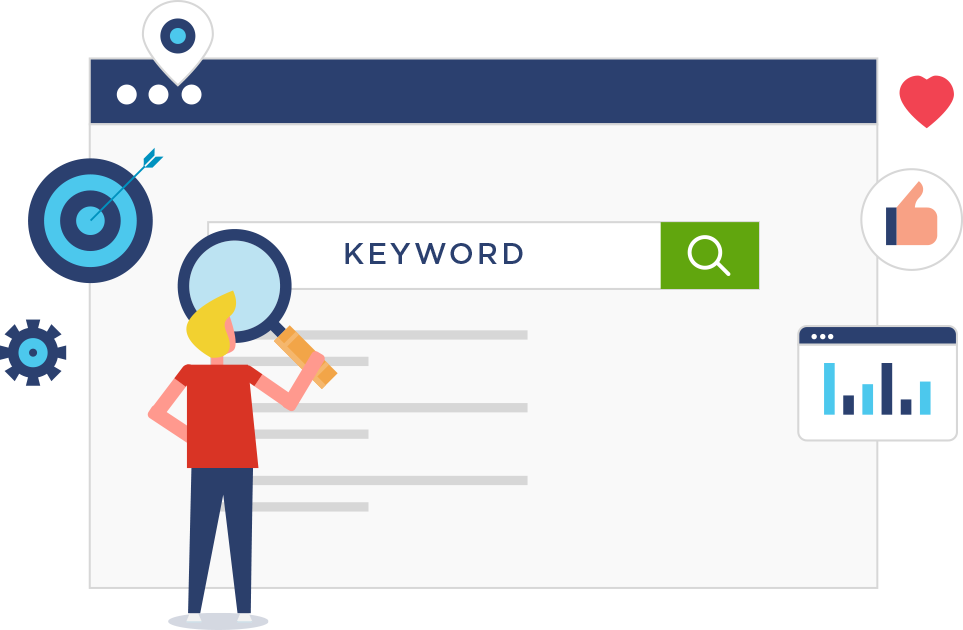Tips to dodge some common pitfalls and unlock growth
Whenever one of the nearly 1.36 billion iPhone users worldwide are on the hunt for an app, they tend to land in Apple’s App Store. They actively open or are directed to the app marketplace to discover apps that address their problems, offer entertainment, or fulfill a need. Regardless of the purpose for visiting the App Store, their intent to download an app is strong. Using Apple Search Ads (ASA), Apple’s native ad offering with various ad placements positioned across the App Store experience, iOS app developers and advertisers have the opportunity to reach this captive audience with much higher conversion rates compared to other advertising channels.
In addition to high conversion rates from high-intent users, ASA provides advertisers with deterministic attribution and measurement data, something that is much more difficult across other iOS paid channels since the introduction of the AppTrackingTransparency (ATT) framework. For these reasons, advertisers are utilizing ASA now more than ever. Since the release of iOS 14.5, when the ATT framework went into full effect, ASA has climbed to account for 38% of total iOS attributions, up from 12% pre-enforcement of the ATT framework in April 2021.
With more advertisers than ever before using ASA and an increasing number of apps being added to the App Store (nearly 1.8 million), it’s important for advertisers to hone in on ASA optimization. With so many ways to go about running an ASA strategy, it can be hard to determine the most optimal use of the ad platform. In this blog, we will explore five common mistakes advertisers make when advertising on ASA and how you can avoid them to drive quality app installs and engagement.
1. Inadequate or no brand protection
Brand protection on ASA is the practice of maintaining consistent search result bids for your own brand keywords so competitors cannot easily win bids on those terms. This allows you to maintain some level of control over your brand’s visibility within App Store search results. If you don’t have any brand protection, competitors can easily win bids for your key brand terms and top the search results for your app – enabling them to captivate users that originally came to the App Store to search for you. On the other hand, if you have some brand protection but your approach is inadequate, you won’t be able to maintain a healthy share-of-voice (or impression share), which is a measurement of the percentage of ad impressions your ads receive for a given set of search terms compared to the total number of ad impressions for those terms.
To protect your brand while continuing to bring in organic searches, you must have a sufficient brand protection strategy, though ideally, your entire budget shouldn’t be spent solely on brand terms.
By utilizing an ASA campaign management platform like Search Ads Maven , share-of-voice can be easily monitored and automation rules can be used to auto-optimize your bidding strategy on brand keywords to stay within budget while maintaining your desired share-of-voice.
2. Going vertical too quickly in your keyword strategy
Similarly to stocks, it’s best to have a diverse portfolio of keywords and bids. A common mistake advertisers make is only going in one direction with their ASA keyword strategy. Make sure to go horizontal (at least at the beginning) and vertical to get a diverse set of keywords. Once you have gathered a wide range of keywords that work best for your brand, test them to determine which ones are the most effective. This is where a discovery campaign can be helpful.

How to create an effective discovery campaign
To run an effective discovery campaign – here is an effective strategy:
- Start by creating a discovery campaign and implement Search Match to find the best performing keywords and search terms for an app.
- Apple will automatically match the app to relevant keywords using the app’s metadata. You can then review the results and choose the terms that are performing well.
- Once this is done, move those high performing terms over to an exact match campaign within your app vertical(s).
Another method is to use Broad Match in a discovery campaign. In this approach the advertiser is telling Apple to bid on a keyword and all other similar terms (eg, autofill results) which save the advertiser time and resources researching all possible variations of the keyword. Start by:
- Include all keywords from all of your other campaigns and put them in a Broad Match discovery ad group.
- Add those same keywords in a negative exact match campaign to target users searching for relevant keywords (that might include misspelled words) or that use autofill. This will put the app in front of more potential users but will ensure you are not competing with yourself and your specific keywords in other exact match campaigns.
Discovery can also be used to test under-performing keywords or push keywords that aren’t performing as expected. For a non-performing keyword, you can test these terms by setting them at very high CPT (cost-per-tap) and a very low CPA (cost-per-acquisition) target in a discovery campaign which will maximize that keyword’s potential to scale while protecting the results for low CPA target. While this is a tried and tested method in the industry, it’s not a guaranteed win, but it is a good last chance method when trying to push a lazy keyword.
More keyword search tips
Apart from running a discovery campaign, here are some other ways you can leverage keywords:
- Find a lot of keywords that are relevant or close to relevant to your app and determine if they should be bid on once those keywords are found.
- Bid on hundreds of thousands of keywords at the same time to diversify the risk and collect a lot of data. Get installs from every type of keyword and adjust bids, then categorize keywords into themes (eg, brand keywords, generic keywords, competitor keyword) then launch campaigns based on those keyword themes and add those keywords into a negative discovery campaign so that there’s no keyword overlap.
- Explore negative keywords. These tell Apple to not show an ad for those keywords which will prompt Apple to find new keywords.
Remember, don’t spend too much money during this discovery/testing phase. Once you find high performing keywords, add them to a new campaign where you can more confidently spend.
3. Measuring success on Apple’s CPA alone
If you’re using ASA and optimizing for installs, you’re using the tool as you should and you’re doing as much as you can with it. However, if you really want to start optimizing toward deeper funnel conversion events and learn which keywords are driving those events, it’s important to sync your ASA data with a mobile measurement partner (MMP).
With an MMP, you can make more data-driven decisions and gain a better idea of your ASA campaign success. An MMP will bring in rich data that can be used to optimize your spend which you cannot get with ASA alone. With higher-quality data you can target conversion events that are more meaningful to you. For example, with ASA data you could only answer ‘ What is it worth to get an install?’ but with the additional MMP data you can answer ‘How much is it worth to you to get a registration?’. Knowing the value of a registration event (or other post-install events) can give you more insights into your campaign performance than just installs.
Working with an MMP can also help determine when you should transfer keywords from your discovery campaigns to other spend-heavy campaigns. You can gain more down-funnel insights such as post-install app events and activity, and high volume of this data can indicate that the keyword will have a good outcome when applied to other campaigns. If you don’t have a lot of data, you can look at the install-to-tap ratio to get an idea of the term’s performance.
4. Not leveraging Custom Product Pages
According to a poll conducted on our recent webinar, 33% of listeners have yet to use custom product pages (CPPs). If you’re not leveraging CPPs you could be missing out on key audiences who might be searching for your app. CPPs act as a landing page for your app on the App Store, and different ones can be created for specific search terms you’re targeting. This allows you to tailor the user experience and helps to increase the conversion rate for those terms.
A good practice when starting out with CPPs is to categorize your app features into themes (eg, a trail finder app having distinct custom product pages for hiking, biking, running, skiing, etc.) and then tailor that user experience based on those themes. While you can create up to 35 CPPs, there is no need to use all of them. Keep things simple and only use them for specific app features and audience types.
Note: Within your ASA account, you can only create a CPP at the campaign level so you must build out multiple campaigns for each CPP and link them together.
For some apps, though, CPPs might not be needed. If your app only has one very specific feature or tool, a CPP might not be relevant.
5. Trying to scale without automation
The last mistake to avoid is not utilizing automation when scaling your ASA campaigns. At some point, manually optimizing large-scale keyword campaigns will become too complex and time consuming. Even when you’re equipped with data from ASA and an MMP, managing and aligning that information can be overwhelming. This is because each keyword requires custom changes to find its optimal bid, leading to increasing complexity. Also, the dynamic nature of search volume and competitor activity requires real-time adjustments. It quickly becomes impossible to manually analyze this vast amount of data and determine the ideal bid adjustments at an ideal frequency and pace.

The solution lies in leveraging an automated platform that performs these tasks by continuously monitoring and informing your strategy. Automation allows you to personally target specific aspects of your campaign tailored to individual preferences. Furthermore, automation can be fine-tuned to align with various campaigns and strategies. If you’re ready to ditch the spreadsheet olympics and automate your ASA campaigns, an ASA campaign management platform like Search Ads Maven is a next step in your ASA growth strategy. Search Ads Maven allows you to bring your ASA and MMP data sets together for unmatched automation and potential to scale. To see examples of automation in action, book a free, no obligation demo with one of our experts.
Grow on ASA
ASA is a highly effective platform for app discovery, boasting strong conversion rates and attracting users with clear intent to download. As more and more marketers use ASA for their app advertising, it becomes increasingly important to optimize your strategy.
However, ASA alone does not have the capability to automatically optimize to your most important business goals after the install. By incorporating data from an MMP like Kochava, you are able to optimize not just the install but installs targeting a specific event. With an MMP, you can look at keywords based on post-install event quality, revenue, and down-funnel KPIs and then Search Ads Maven will take that data and automate the actions you want to take based on that data.
If you want to learn more about these common ASA mistakes, watch our free webinar, 5 Pitfalls to Avoid in Your Apple Search Ads Strategy.
If you have any questions, feel free to contact us at support@searchadsmaven.com.

